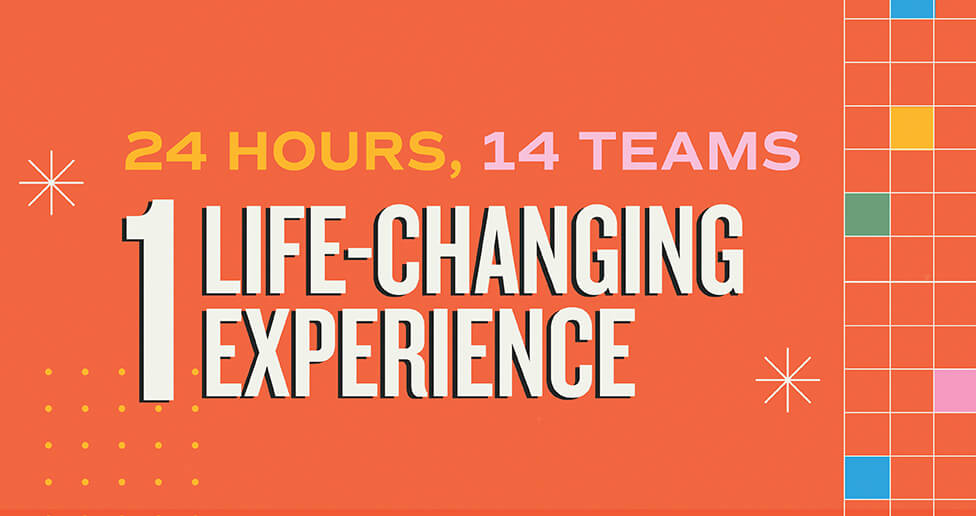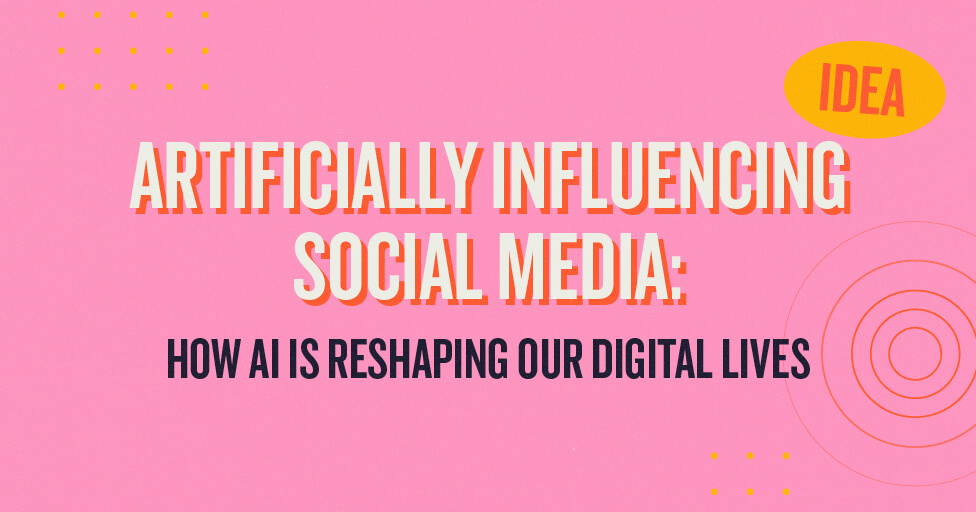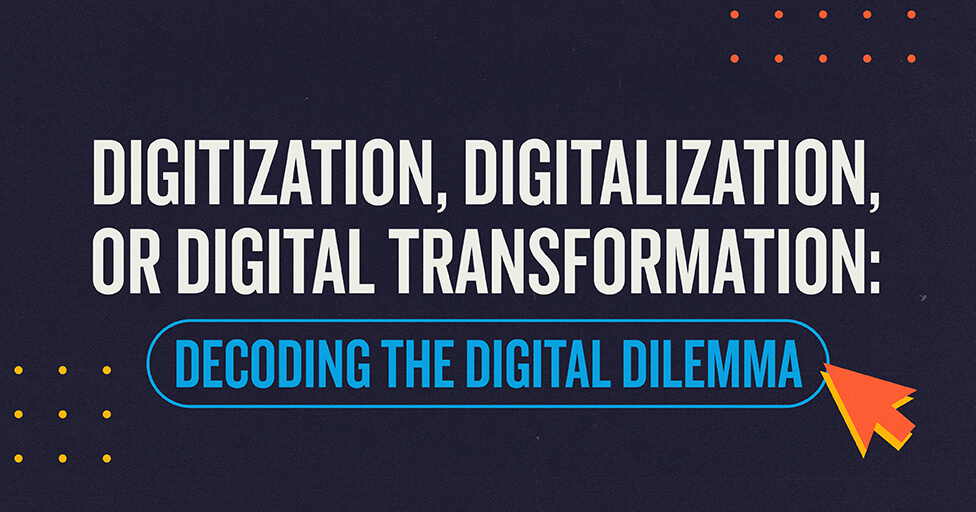
The Lack of Diverse Creative Leadership in Advertising and Why It F#cking Matters
I’m an ad girl. I love business, politics, and creative. And I love them most when they intersect. Naturally, I became an art director, with hopes, dreams, and fingers crossed that I would someday-not too long from now-become a creative director. However, I was intrigued to find out that in 2013, the year of my inauguration into the ad world, only 11% of creative directors recognized by Communication Arts were women.1
“88% of young female creatives say they lack role models in the advertising industry.”
“Five facts that show how the advertising industry fails women,” The Guardian, February 3, 2016
Not only is this a personal problem—this is an industry problem. Learning about the extraordinarily low representation of women in creative leadership was a surprise, especially considering that it is common knowledge that teams with diverse backgrounds are more creative, and that women make 85% of all consumer purchases.2 This is why the 3% Conference was created.
“The conference was created to promote the role of women in creative leadership at ad agencies, deriving its name from a 2008 statistic that said only 3 percent of creative directors at top ad agencies were women.”
Sapna Maheshwari, “3% Conference Spotlights Hurdles for Women at Ad Agencies”, New York Times, November 5, 2017
As a young female art director, I was thrilled to have the opportunity to be surrounded by women changing the landscape of advertising and creating the campaigns most of us will only ever dream of making. 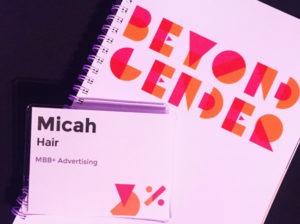 My anticipation for the conference had been growing since the agency agreed to send me back in April. I had done research and read tons of articles. My eagerness and open mindedness prepared me for two full days of taking in incredible perspectives and ideas from some of the greatest leaders of our industry.
My anticipation for the conference had been growing since the agency agreed to send me back in April. I had done research and read tons of articles. My eagerness and open mindedness prepared me for two full days of taking in incredible perspectives and ideas from some of the greatest leaders of our industry.
This year, the conference expanded to discuss not only gender equality, but the impact and importance of diversity. Despite my anticipation and preparation, I was still blown away by the insight of these presentations and walked away with an expanded perspective on privilege, conscious advertising, and the value of women in our industry.
On Privilege
The conference opened with a privilege walk. The emcee, Luvvie Ajayi, Social Media Expert and New York Times best selling author, pulled ten of the conference speakers onto the stage and asked for them to stand in line with their right hand on the shoulder of the individual next to them. The group was comprised of men and women; young and old; black, white, and brown; gay and straight; and abled and disabled.
Ajaya gave further instruction to take a step forward or backward for any following statement that was applicable to that individual. Here are a few examples:
- Take a step forward if English is your first language.
- Go forward if one or both of your parents have a college degree.
- Move forward if you can assume physical access to most buildings.
- Step forward if you can see yourself readily represented in mainstream media.
- Move back if you’ve ever skipped a meal or gone hungry because you didn’t have enough money.
- Step back if you suffer from an invisible illness.
- Take a step forward if you always assumed you’d go to college.
As the participants had to take steps backwards or forwards, many had the desire to stay connected and often wanted to bring those around them forward. Those in the back observed the movements of those in front, while the people in the front had to make concerted efforts to see those behind. Some participants found comfort in having others around them, knowing that their struggles are understood and seen. Interestingly, everyone moved forward when asked about whether they had always expected to attend college. One person noted that things have changed in their lifetime, saying that 14 years ago, people wouldn’t necessarily be able to marry who they love. And some things haven’t changed—the black man was still in the back.
This exercise demonstrated that even in this movement of diversity, we do not move together. And this opened the 3% Conference: Beyond Gender. This was poignant reminder for me, especially coming from the Midwest, where diversity is even less apparent in our industry.
On Conscious Advertising
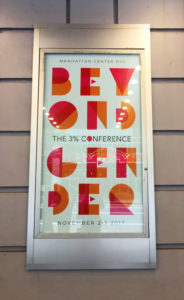 The day continued with more challenging concepts and training for diversity conscious discussions. Another speaker, Torsten Gross from J Walton & Thompson, a guy in a wheelchair, challenged the audience to be vulnerable enough to ask questions. Talk to others around you with different life experiences, make yourself vulnerable and try to understand new perspectives, while maintaining positive intent. Part of becoming a more diverse industry or agency is opening up to find out where our audience is or where our peers are in life. We must know our audience, ask questions, know our business and our stance – be true, honest, and respectful to all.
The day continued with more challenging concepts and training for diversity conscious discussions. Another speaker, Torsten Gross from J Walton & Thompson, a guy in a wheelchair, challenged the audience to be vulnerable enough to ask questions. Talk to others around you with different life experiences, make yourself vulnerable and try to understand new perspectives, while maintaining positive intent. Part of becoming a more diverse industry or agency is opening up to find out where our audience is or where our peers are in life. We must know our audience, ask questions, know our business and our stance – be true, honest, and respectful to all.
“This is how diversity works: by promoting hard work and creativity; by encouraging the consideration of alternatives even before any interpersonal interaction takes place.”
Katherine W. Phillips, “How Diversity Makes Us Smarter,” Scientific American, October 1, 2014
In the past year of advertising, we have seen ads that have truly invested in the experience of their consumers. Several of these were honored with an Athena Advertising Award, recognizing creative advertising that represents women in an empowering and diverse way, at the 3% Conference.
MullenLowe created an experiential ad for JetBlue called FlyBabies, empowering parents flying with babies; each time a baby cried, all passengers on the flight were given a credit towards their next flight with JetBlue. RGA created the Ask for a Raise social campaign, featuring the fierce Cindy Gallop as an automated messaging platform geared toward encouraging and empowering women to ask for the raise they deserve. FCB concepted and produced the film Women Make Us Better, featuring female engineers at Boeing reading university rejection letters from 1919, highlighting the lack of empowerment for women in STEM fields. Wieden+Kennedy was recognized for their print campaign for Equinox, Commit to Something, showing both men and women who are relentless in their dedication, even outside of the gym. Finally, Droga5 was recognized for their Unlike Any campaign for UnderArmour, which uses stunning videography, spoken word poetry, and the performances of top women athletes to inspire their audience.
“Brands with the best stories win hearts, minds, and wallets.”
Story Worldwide, “Story Meets Brand: Modernizing the Good Humor Brand,” The 3% Conference, November 2, 2017, Manhattan Center, New York City, NY
These are top examples of advertisements created for the consumer and providing them value, while staying true to the business’s purpose and mission. While this was only a small portion of the conference, it was truly inspiring for me to see the work of strongest and most creative women leaders in advertising. When dealing with less than ideal budgets, timelines, or other constraints, it’s not always easy to remember the passion that most of us have for advertising and an amazing brand story. However, these ads never lost sight of their purpose, and the results were beautifully told brand stories that added value to the lives of real people.
On the Value of Women
On the second day of the conference, it was announced that 29% of agency leaders are women now, based on a new study conducted by the 3% Conference. This study is still not inclusive of the full industry, but it is still a great initiative for advertisers to gauge their status. All of the information presented, whether qualitative or quantitative, was absolutely enlightening, leading up to the final keynote speaker. The conference ended with the powerful and focused perspective of Cindy Gallop.
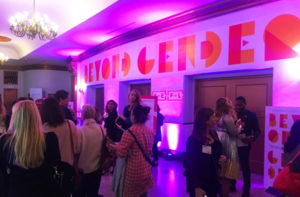 Gallop, an advertising consultant and founder of MakeLoveNotPorn and IfWeRanTheWorld, opened her fiery presentation with the claim that there is huge money to be made in taking women seriously in advertising. Diversity drives better business; not only is the creative often more innovate, but diversity helps the bottom line.
Gallop, an advertising consultant and founder of MakeLoveNotPorn and IfWeRanTheWorld, opened her fiery presentation with the claim that there is huge money to be made in taking women seriously in advertising. Diversity drives better business; not only is the creative often more innovate, but diversity helps the bottom line.
Gallop continued with three steps for women to eliminate gender inequality in advertising. She presses women to make their agency immediately gender-equal or more female than male at every professional level and urges the promotion of good sexual values and the establishment of a societal gold standard of such. Sexual harassment is an epidemic suppressing women from being creative leaders. Sexual harassment prevents gender equality by reducing the humanity and professional dignity of women, essentially destroying their career paths.
“A staggering 42% of all female employees across all agencies reported they have experienced sexual harassment at some point in their career in advertising.”
Rosie Baker, “The Agency Circle diversity survey results”, AdNews, August 21, 2017
Finally, Gallop tells women to start making “an absolute goddamn fucking shit-ton of money.” Be the best advertiser you can be and demand your worth; ask for the money and if you don’t get it, create your own agency. We need to become the leaders for the next generation of diverse creative leadership. We need to mentor, lead, and own the future of advertising.
Gallap acknowledged the presence and need for male allies in our pursuit of a more gender-equal ad world. However, she was also very clear that she believes men are generally comfortable with the power imbalance.
“Real change will require the willingness of men to promote women and share power. It will mean more than promoting one woman and encouraging the other female employees to be more like her. It will mean investing in and promoting the women you work with and realizing that while many employees are talented yet also complicated and flawed, women are usually the only ones who suffer for it. And it will require a serious investment in the work and ideas of young women, so that they aren’t made to feel disposable anymore.”
Marin Cogan, “When You are Replaceable and He Never Will Be,” The New York Times, October 28, 2017
As a young female creative, I am overwhelmed by the facts but not discouraged. When agencies make gender equality and diverse representation a priority, we’ll know. It will be reflected in our culture, and more importantly, our work. Advertising will continue to make a shift from being just memorable to being valuable and more integrated into the experiences of our consumers. And gender representation and diversity will only make us all better at our jobs.
“Changing culture is no small thing, it requires concerted effort over years by the people in power, who model behavior and set the cultural agenda— and thereby benefit daily from it.”
Megan Averell, “Bro Culture in Ad Agencies and the Impact on Women”, The Insight Inn, November 2, 2016
Further Reading
This is a fascinating topic with tons of really great and informed perspectives. For more insight into the state of the ad industry, regarding gender and diversity equality, I would recommend theses sources:
- How Diversity Makes Us Smarter
- Where We Stand
- Elephant on Mad Ave.
- The ugly truth about advertising’s gender bias, and how to change it
- Women vs. Men: Who’s on Top in the Design Profession?
- The Truth About Gender Bias in Ads in 2017
[1]https://www.3percentmovement.com/sites/default/files/resources/3percent-ResearchResults_FINAL.pdf
[2]http://she-conomy.com/report/marketing-to-women-quick-facts
Subscribe to our newsletter
Get our insights and perspectives delivered to your inbox.
